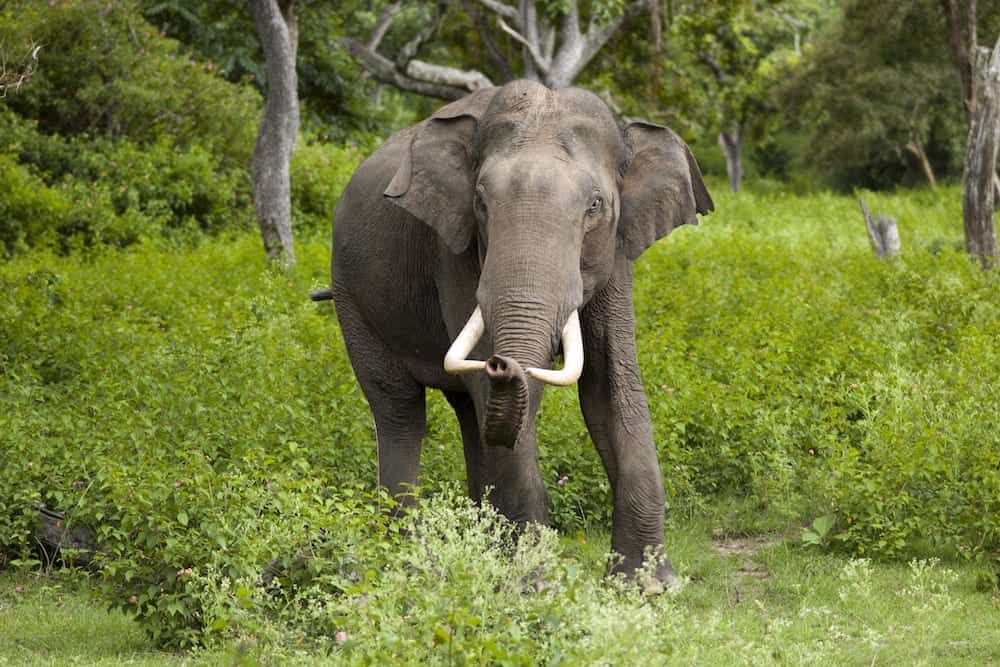Capturing elephants from the wild dramatically shortens their lives – particularly older ones, warns new research.
Scientists found that captured elephants had an average lifespan up to seven years shorter than that of ones born in captivity.
Humans have been capturing wild Asian elephants for more than 3,000 years, and that continues today despite the fact that the populations are declining.
Now an international team of researchers has analysed records of timber elephants in Myanmar to understand the effects of capture.
The study shows that even years after their capture, wild-caught elephants’ mortality rate remains increased, and their average life expectancy is “several years” shorter compared to captive-born animals.
Millions of wild animals are captured alive each year for a range of purposes.
While some species can thrive in captivity and are healthier, live longer, and produce more offspring than their free-living counterparts, scientists say many others perform far worse.
They said elephants, for example, are known to be at a much higher risk of dying when captive in zoos compared to living in the wild.
But the researchers said that such comparisons mainly illustrate the differences in the diet, social environment, exercise possibilities, and disease patterns between zoos and wild environments.
They said they provide little insight as to how the capture of wild elephants might affect their long-term well-being in captivity.
Elephants have been employed in logging camps in Myanmar for centuries.
Wild-caught and captive-born animals there work and live side by side in forests and are, generally, tamed with the same methods, live in the same environments, and are treated similarly.
The detailed records kept by local governments on elephant husbandry provided a wealth of information for researchers from the University of Turku in Finland and the Leibniz Institute for Zoo and Wildlife Research in Germany.
Based on figures stretching back nearly a century and including more than 5,000 timber elephants, the researchers could establish a “robust” predictive model on elephant survival after capture.
Study lead author Dr Mirkka Lahdenpera, of the University of Turku, said: “Our analysis reveals that wild-captured elephants had lower survival chances than captive-born elephants regardless of how they’d been captured, whether by stockade of whole groups, lassoing single elephants, or immobilisation by sedation.
“This means that all these methods had an equally negative effect on the elephant’s subsequent life.
“We also found that older elephants suffered the most from capture; they had increased mortality compared to elephants caught at younger ages,”
He said all elephants face the highest risk of death in the year immediately following capture. Although the risk decreases in subsequent years, the negative effects still last, alarmingly, for around a decade.
Dr Alexandre Courtiol, of Leibniz Institute for Zoo and Wildlife Research, said: “We chose to rely on data from timber camps as, their capture aside, both wild-caught and captive-born elephants have very similar life styles.
“This unique situation allows a comparison between these two groups unbiased by other factors such as diet or exercise,”
The researchers said that both captive-born and wild-captured timber elephants in Myanmar live together in semi-captive populations.
They work during the day and are released to forests during the night to find food on their own, and can then interact with other captive timber elephants as well as wild elephants.
The captive animals are also subjected to the same governmental regulations concerning data recording, workload, and rest periods. Working elephants have holidays, maternity leave, and a mandatory retirement age.
Both captive-born and wild-caught elephants are tamed and trained before entering the workforce.
But wild-captured elephants may be exposed to harsher treatment, depending on their age, sex and, personality compared to captive-born calves.
Study senior investigator Professor Virpi Lummaa said: “The long-term overall cost of capture and taming resulted in a median lifespan that is three to seven years shorter than that of captive-born elephants.
“Capturing elephants to sustain captive populations is, consequently, detrimental, because it not just reduces wild populations of this endangered species, but it also cannot provide a viable solution to sustain captive populations.
“These wild-caught animals live shorter lives and reproduce poorly in captivity,”
Long-term stress due to capture and taming as well as changes in the social environment are potential reasons for the shorter life of captured elephants, according to the researchers.
Dr Lahdenpera added: “We ought to find alternative and better methods to boost captive populations of elephants.
“Even today, over 60 per cent of elephants in zoos are captured from the wild and about a third of all remaining Asian elephants now live in captivity.”
She said the results of the study strongly suggest that support and care for the animals is especially critical during the period immediately after capture.

